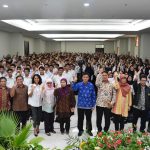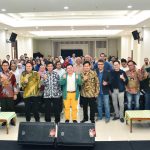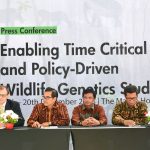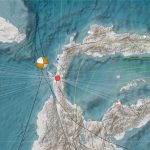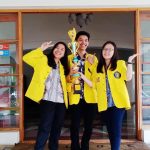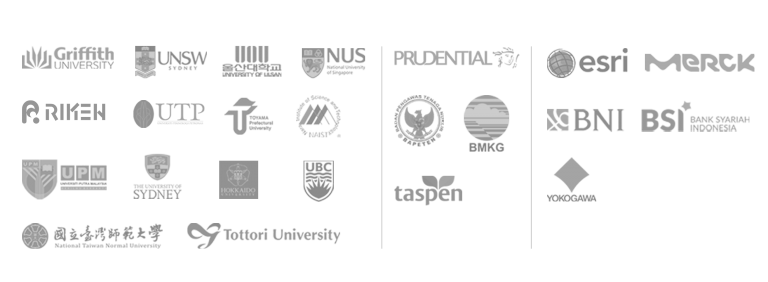Four students of the Physics Department, Faculty of Mathematics and Natural Sciences, Universitas Indonesia (FMIPA UI) gave a solution to overcome the problem of drought and the difficulty of obtaining clean water by utilizing resistivity method technology.
The four students were Ade Rama Tanjung Putra (class of 2015), Luthfan Togar Harahap (2014), Miftahul Umam (2017) and Tiva Rahmita (2017).
The thoughts of the UI students were implemented in Sirnajaya Village – Bogor, which was experiencing clean water difficulties. This forced residents to walk 5-6 km to get clean water.
The benefits of applying this resistivity method have been felt by residents because they managed to find potential well points as a source of water that is close to the settlement of villagers. Ade, as the team leader claimed that this resistivity method can accurately predict the location of the water flow layer, so as to minimize drilling costs due to the risk of error in determining the location of well drilling.
Ade, explained that the difficulties of the villagers not only walked 5-6 km, in order to get clean water they even had to arrange pipes along the distance. And not all residents are able to install it because of economic constraints.
In addition, continued ade, the next obstacle that the community uses is very cloudy and tends to be muddy, even though the water is used as drinking water, bathing and even cooking.
During the program implementation, the students of FMIPA UI conducted geomorfology and location marking surveys, data acquisition with resistivity, processing and data interpretation methods to mapping resistivity and topographic data.
The results of the study indicate that there is a potential water source near the mosque waqf land, so that drilling is potential to be carried out in the area. The discovery of this potential well point will be continued with the drilling process to begin construction of a water source near the residential area of Sirnajaya Village, Bogor.
“The application of this resistivity method has great sustainability potential, that is by replicating the same program to be applied in other regions that have the same problem. “This work is expected to be able to assist the government in realizing the availability and management of sustainable clean water for all Indonesian people,” said Ade.

